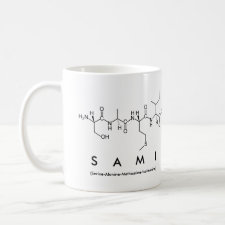
Authors: Claude B, Berho C, Bayoudh S, Amalric L, Coisy E, Nehmé R, Morin P
Article Title: Preliminary recovery study of a commercial molecularly imprinted polymer for the extraction of glyphosate and AMPA in different environmental waters using MS.
Publication date: 2017
Journal: Environmental Science and Pollution Research
Volume: 24
Issue: (13)
Page numbers: 12293-12300.
DOI: 10.1007/s11356-017-8844-5
Abstract: A commercial molecularly imprinted polymer (MIP) dedicated to glyphosate (GLY) and its main metabolite, aminomethylphosphonic acid (AMPA), was lately assessed as "POCIS-like" sampler on mineral water. The obtained results were encouraging with 111 and 122 mL day-1 as sampling rates for GLY and AMPA, respectively. Therefore, before applying this passive sampler to environmental waters, the commercial phase was tested on different water matrices as a solid-phase extraction (SPE) device. The SPE protocol was carried on 250 mg of MIP with the following three steps: conditioning by Milli-Q water, loading of the sample (15 mL), and elution of the analytes by 4 mL 0.1 M HCl that were evaporated to dryness and recovered in 15 mL of the suitable solvent for analysis. This protocol was first applied to mineral water spiked by GLY and AMPA at environmental concentration levels (25-750 ng L-1). Analyses were carried out by ultra-performance liquid chromatography hyphenated to tandem mass after derivatization of GLY and AMPA by 9-fluorenylmethylchloroformate. The linear correlation between concentrations measured with and without SPE on MIP was proved
Template and target information: glyphosate, GLY, aminomethylphosphonic acid, AMPA
Author keywords: AMPA, Glyphosate, Molecularly imprinted polymers, UPLC-MS, MS, IEC-MS, Metal ion interference, Groundwater, Sea water



Join the Society for Molecular Imprinting

New items RSS feed
Sign-up for e-mail updates:
Choose between receiving an occasional newsletter or more frequent e-mail alerts.
Click here to go to the sign-up page.
Is your name elemental or peptidic? Enter your name and find out by clicking either of the buttons below!
Other products you may like:
 MIPdatabase
MIPdatabase









